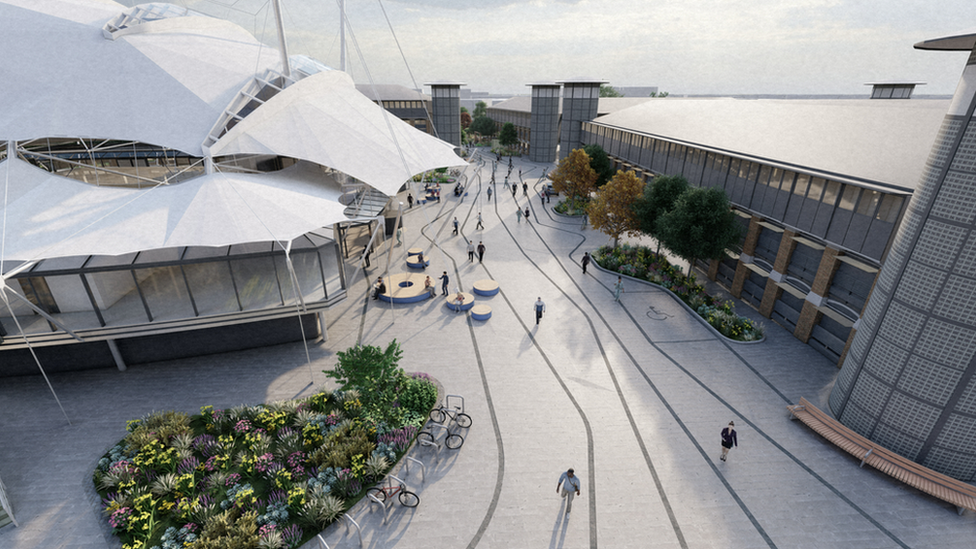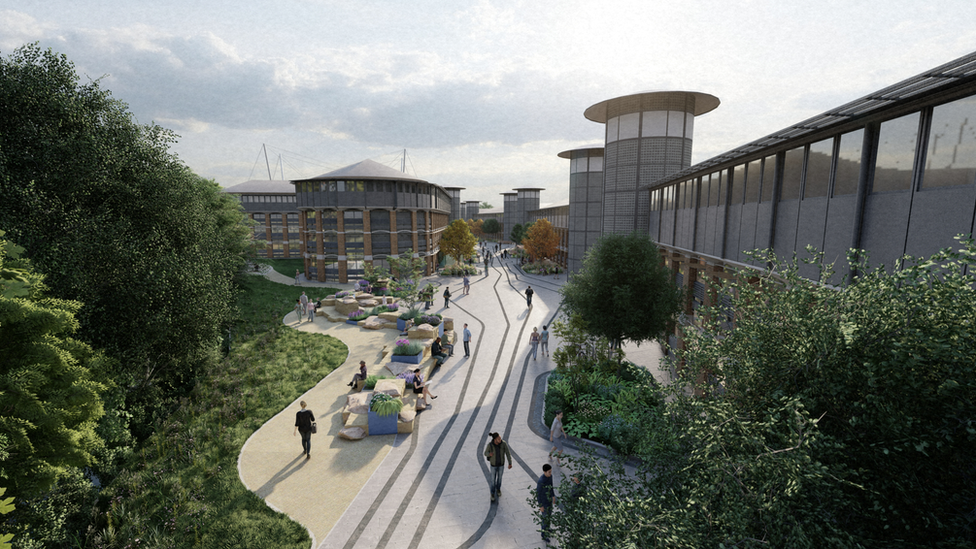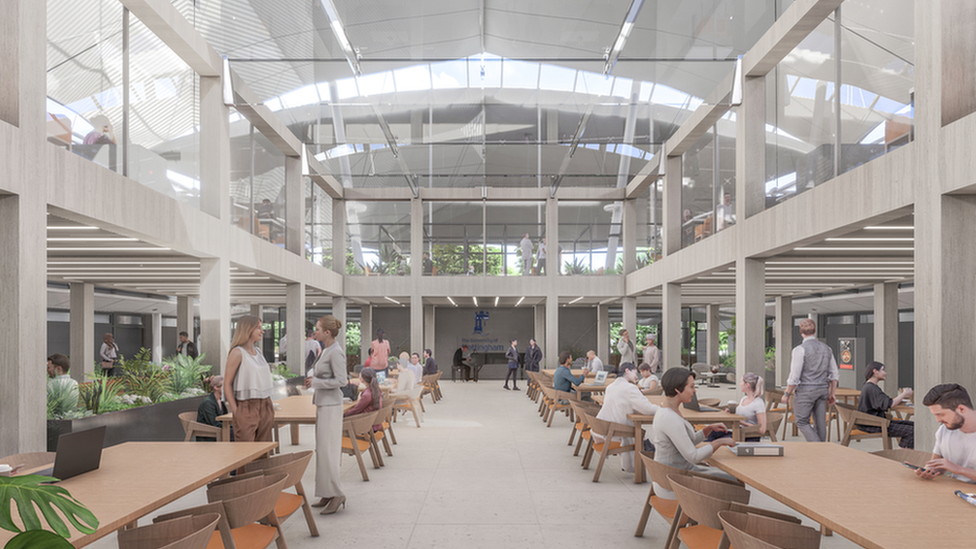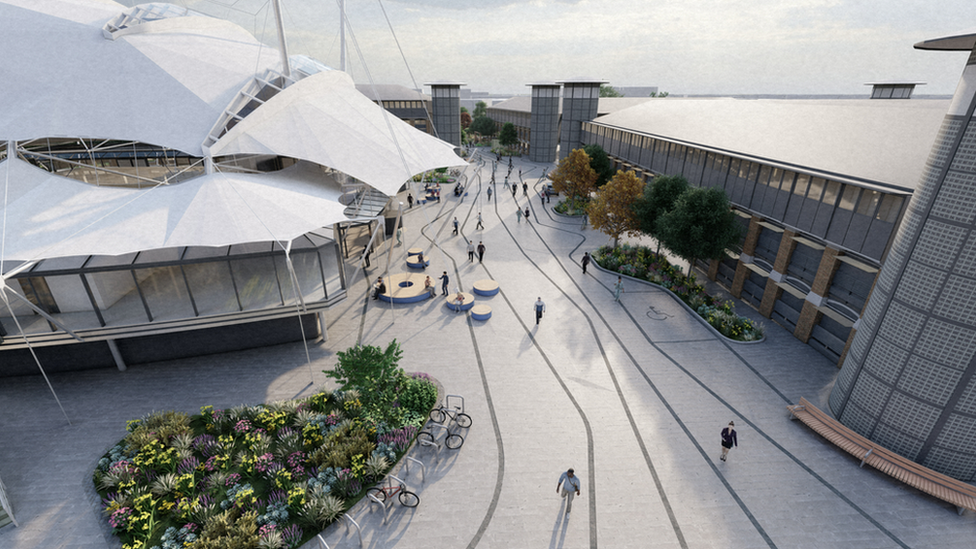University of Nottingham given consent to start work on new site
- Published

The original building was listed in May after the university's plans were announced
Work to convert newly-listed buildings into a university campus has been given the go-ahead.
The University of Nottingham bought the Castle Meadow Campus, which used to be offices for HMRC, in 2021.
Historic England granted the innovative building Grade II-protected status in May last year.
Now planning documents show the conversion work will be based on "minimum intrusion into the historic fabric".
Listed building consent for the plans was granted on Thursday, said the Local Democracy Reporting Service.

The work will be kept to a minimum, but some parts of the complex require repairs
The site, designed by Sir Michael Hopkins and Partners and opened in 1994, was protected due to its unique features, which helped land a series of awards for environmental impact and energy conservation.
It did not require air conditioning due to materials used and the introduction of triple-glazing and underfloor fans.
Glass block stair towers at the corners of the office buildings helped form part of a high-tech ventilation system.
Limited work will be done to areas used by students, but more extensive adaptations are needed in buildings, which will be rented out to businesses, the documents show.
Building F, Yorke House, will be divided up into various rooms with a central area and a reception.
The Amenity Building, which forms the centrepiece of the site, will be used as the social centre of the new campus.

The university said it hoped to open up facilities to the community
Work is required to replace the leaking tensile roof covering, which has reached the end of its 30-year lifespan.
"The proposals are based on minimum intrusion into the historic fabric," planning documents say.
"No whole-scale replacements are proposed, instead repairs will be conducted on a need basis and will adhere to the original aesthetic and intent as much as possible.
"Changes to the Amenity Building are more comprehensive, but maintain the overall landmark nature of the structure.
"The replacement of the roof fabric will provide a more sustainable alternative for the existing covering which has started to degrade."

Follow BBC East Midlands on Facebook, external, on Twitter, external, or on Instagram, external. Send your story ideas to eastmidsnews@bbc.co.uk, external.
Related topics
- Published1 August 2023

- Published23 February 2023
